
The SiW-ECAL prototype of CALICE visits DESY II
The SiW-ECAL team of CALICE has tested the calorimeter with beam data at the DESY facility in November 2021
The CALICE SiW-ECAL (highly granular silicon-tungsten electromagnetic calorimeter) is the reference design of the ECAL for International Large Detector (ILD) concept, one of the two detector concepts for the detector(s) at the future International Linear Collider. Prototypes for this type of detector are developed within the CALICE Collaboration. The final detector will comprise about 108calorimeter cells that have to be integrated in a volume of maximal 20 cm in depth. For the testbeam performed at DESY II beam test facility in November 2021, the prototype featured the newest detector components that, in terms of size and channel density, come already close to the specifications for future large scale experiments. We performed MIP calibration scans and electromagnetic shower studies using a stack with 15 layers featuring 1024 calorimetric readout cells each.
The technical information about the testbeam preparation and operation can be found in the CALICE twiki page
The SiW-ECAL team is composed by several groups from: France (IJCLab – ex LAL, OMEGA, LPNHE, LLR, LPSC), Japan (Kyushu University, KEK ), South Korea (SKK University), CERN and Spain (the AITANA group from IFIC and the CIEMAT)

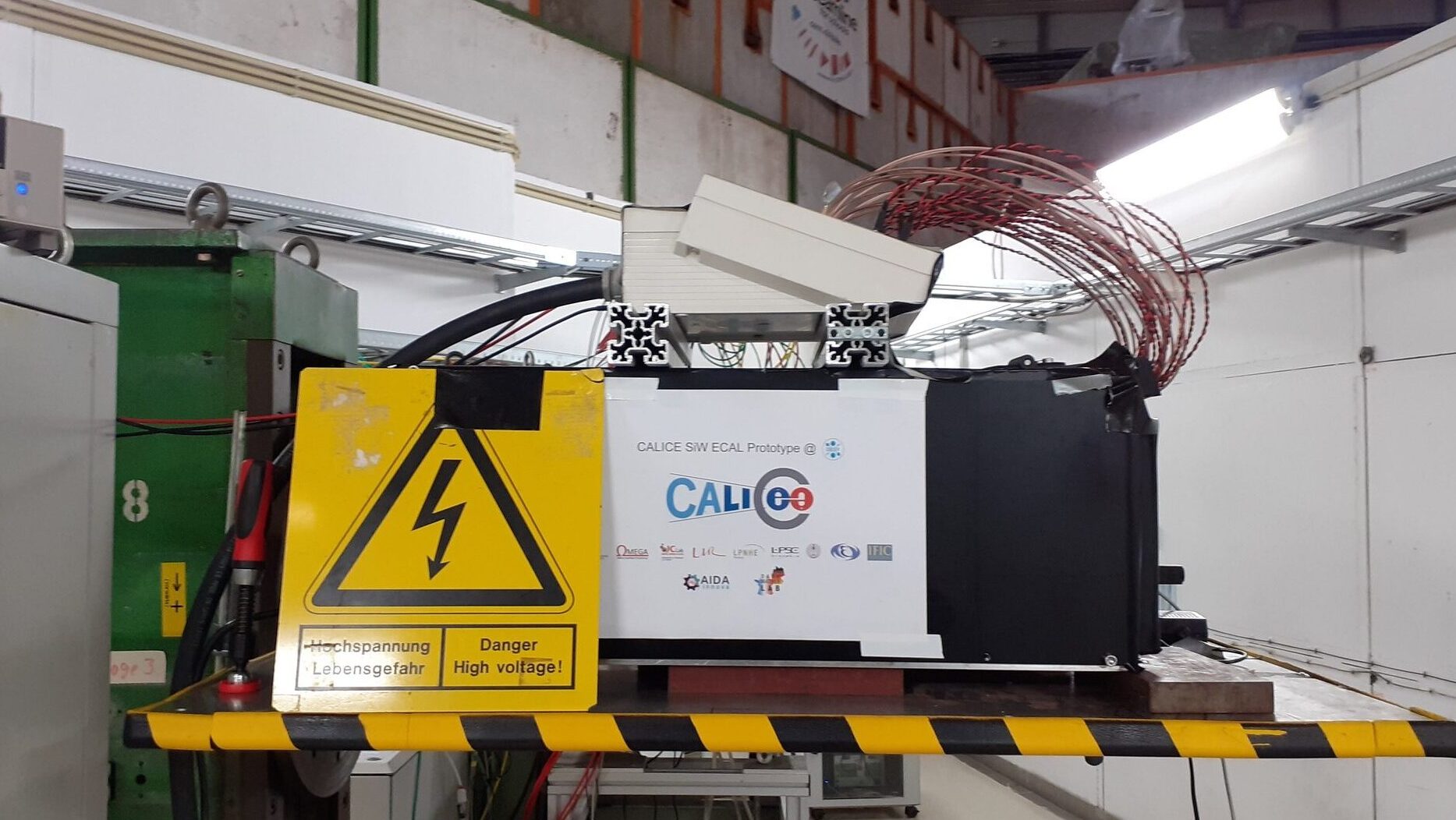
During 2021 a stack with 15 layers of short slabs, equivalent to 15360 readout cells, has been compiled. The different photographs in this blog entry allow
appreciating the high density at the layer extremities. This is already close to what is expected in a final experiment at a Higgs factory.
The testbeam carried at DESY in November 2021 is the most important system test of the new compact DAQ so far. The fifteen single modules (consisting of one single active unit sensor -ASU- and the electronic readout cards -SLboard – ) are interleaved with 14 tungsten plates with a thickness of 2.1 mm (x11) and 4.2 mm (x3) yielding an overall depth of 9.6 radiation lengths (X0). This test is the kick-off of a series of beam tests to be carried at CERN by the CALICE collaboration. In these testbeams, a set of ECAL and HCAL prototypes will record and study the interactions of high energetic leptons and hadrons beams.
The first week of the beam test was dedicated to the optimization of the system (auto threshold determination, characterization of the ASICs, etc) and the single cell calibration. For that, we used the detector in the «tracker» configuration (i.e. without tungsten plates) and used the 3 GeV positron beam as MIP-like beam source. We recorded millions of MIP-like interactions per layer. For the second week, we added the tungsten plates and started the electromagnetic shower program. We made several scans varying the beam position and the energy of the beam, which at DESY is tunable between 1 and 6 GeV.
All this has been possible thanks to the support of DESY and the test beam coordinators. The full test beam has been performed following the strict regulations against the spread of covid19 that allows that the DESY II facility still offers the possibility for external group to access to beam time, key for the test and development of every detector R&D program.
Part of the debugging and mounting process is documented in the set of photographs posted below. We also show a nice event display with a electromagnetic shower recorded with the prototype.
The AITANA group has played an important role in the preparation, setting up and data taking coordination for this testbeam. Adrián Irles has been the Run Coordinator for the two weeks. In addition, Jesús P. Márquez, has also participated attending during the first week, experiencing for first time a test beam.
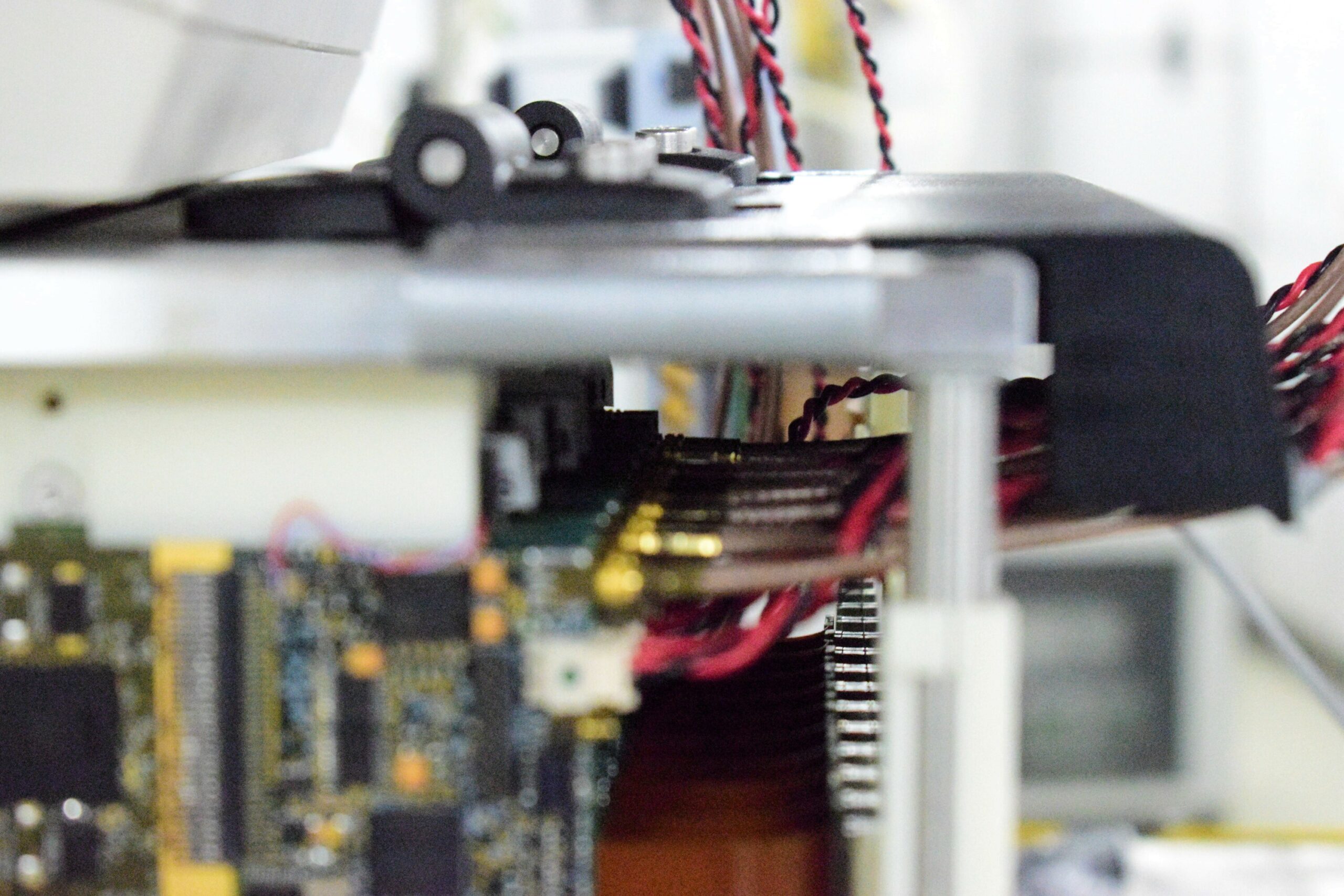
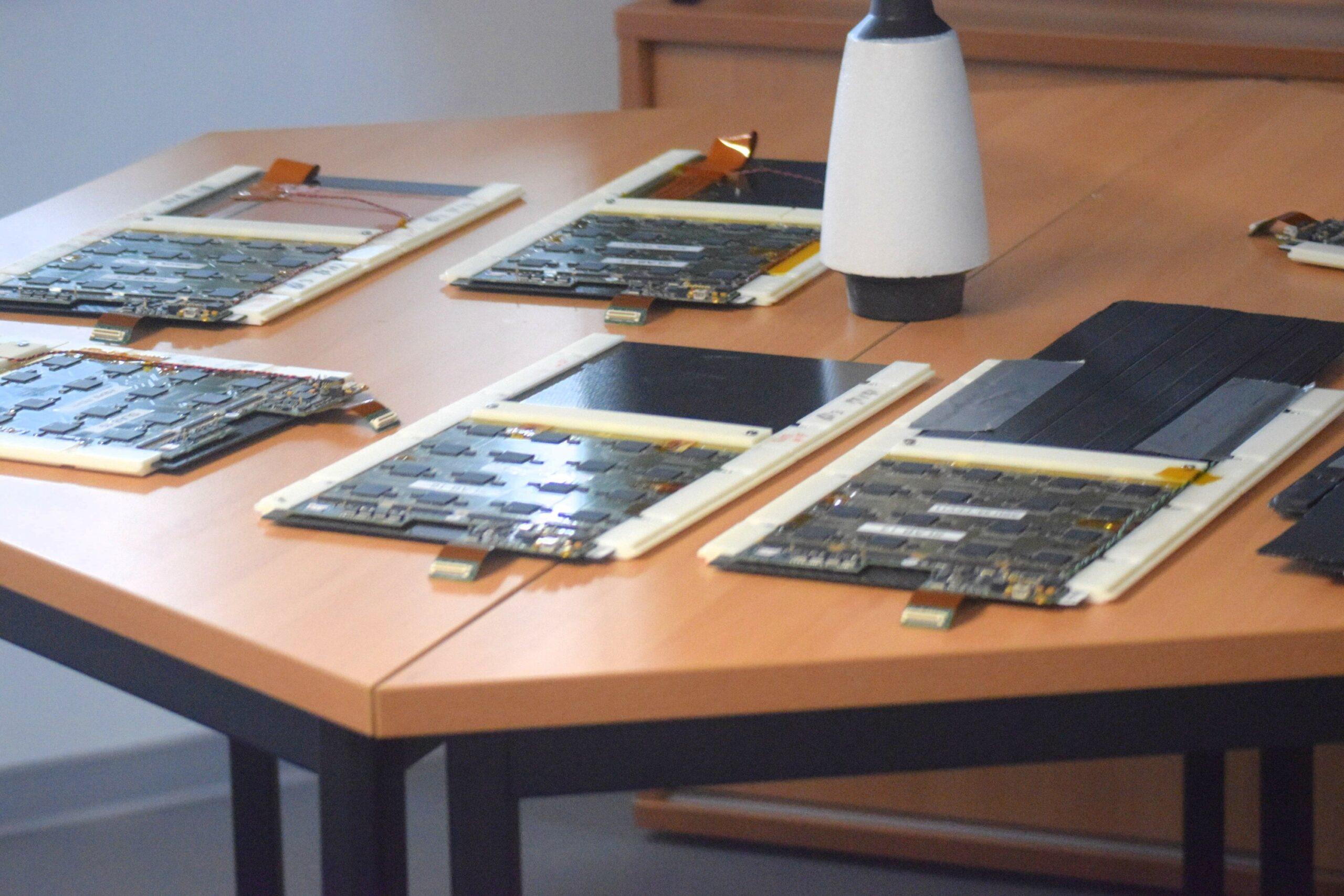
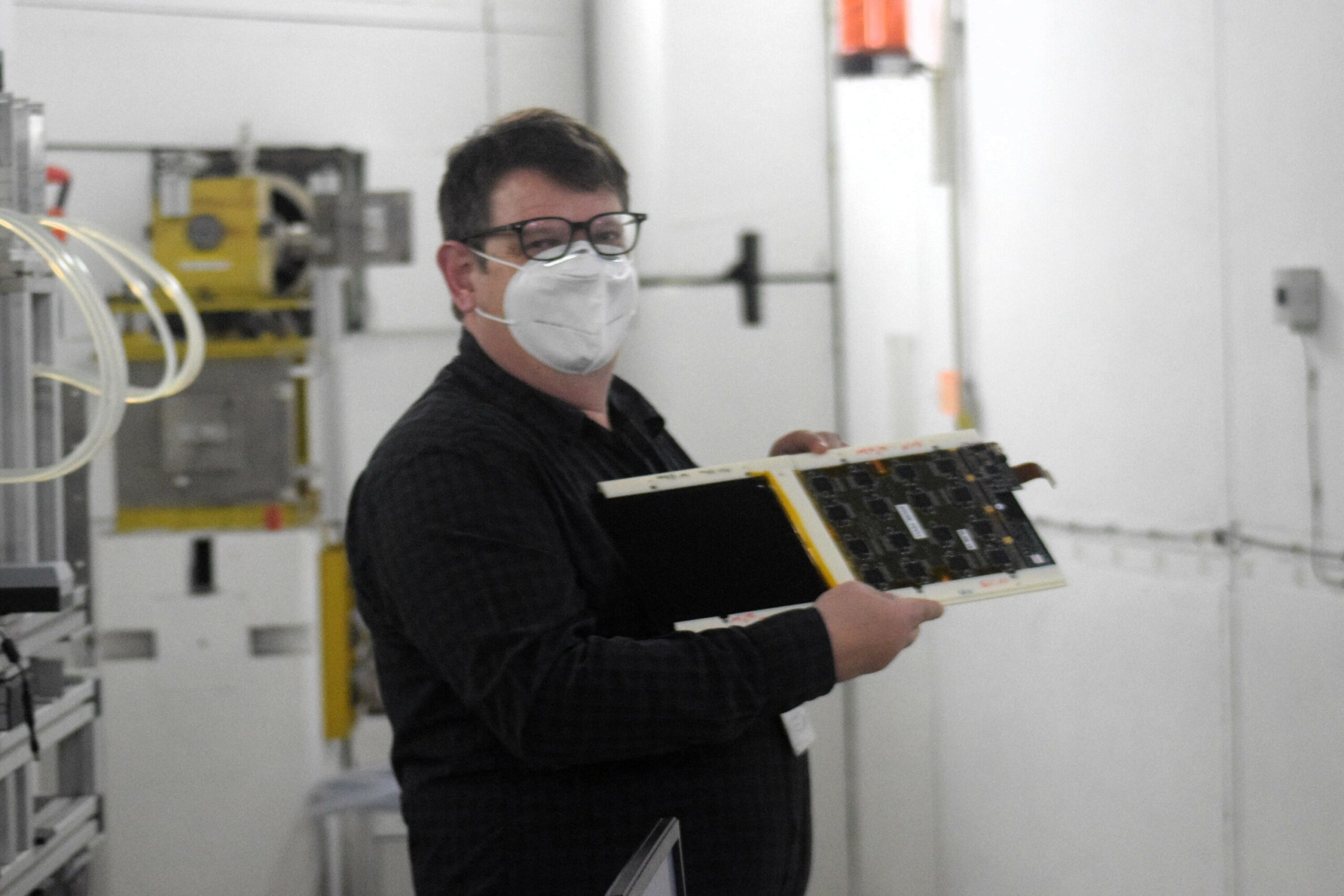


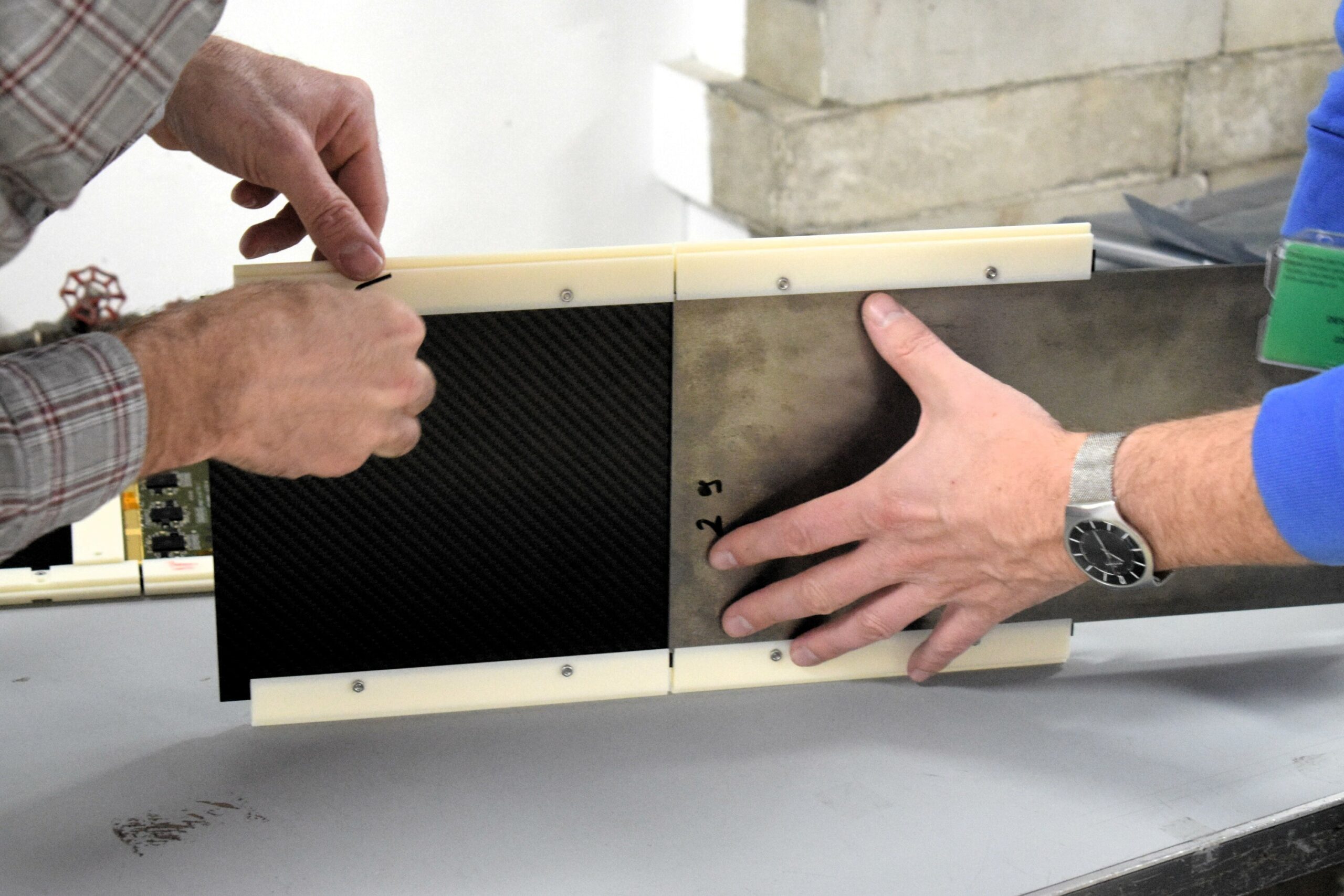

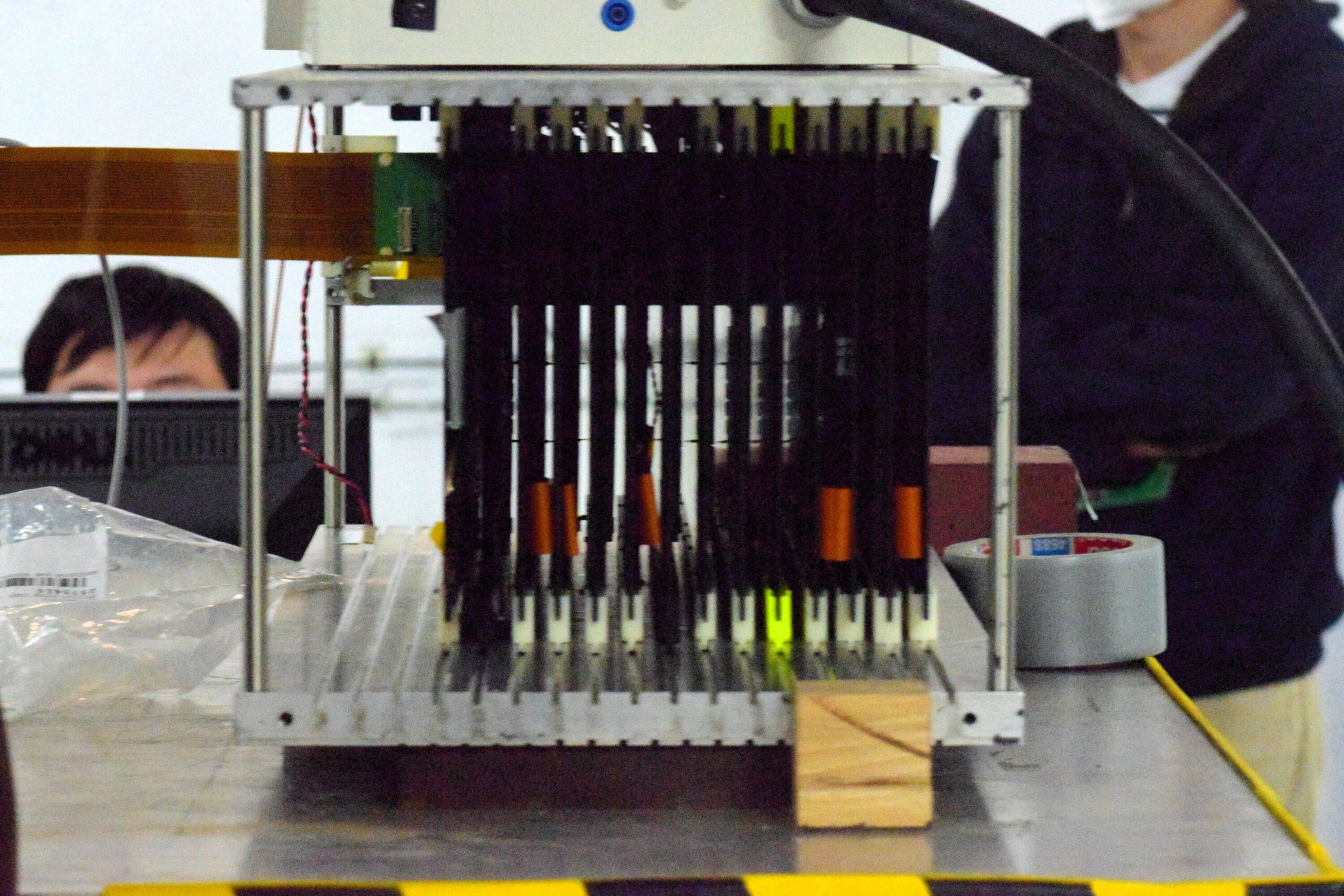

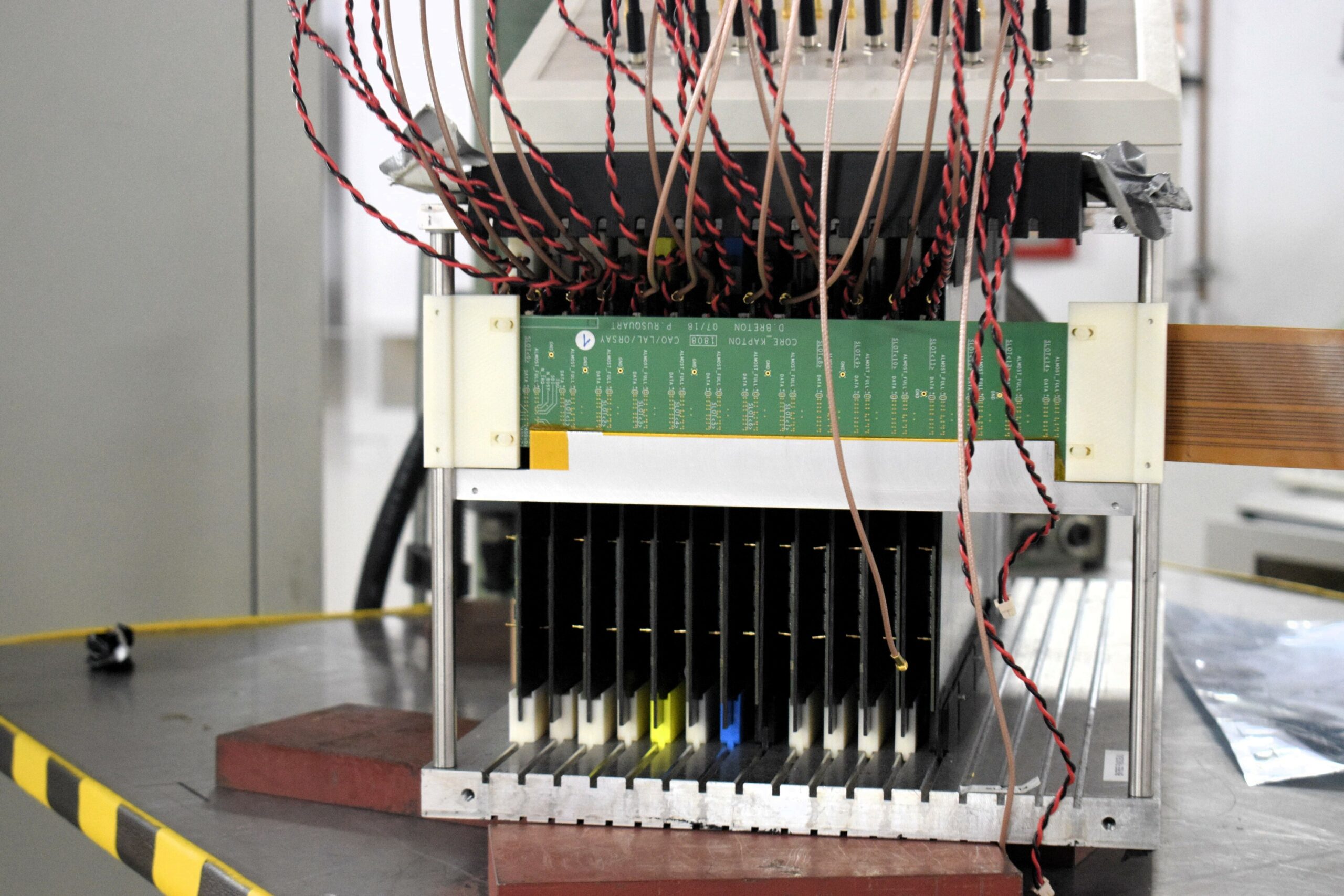
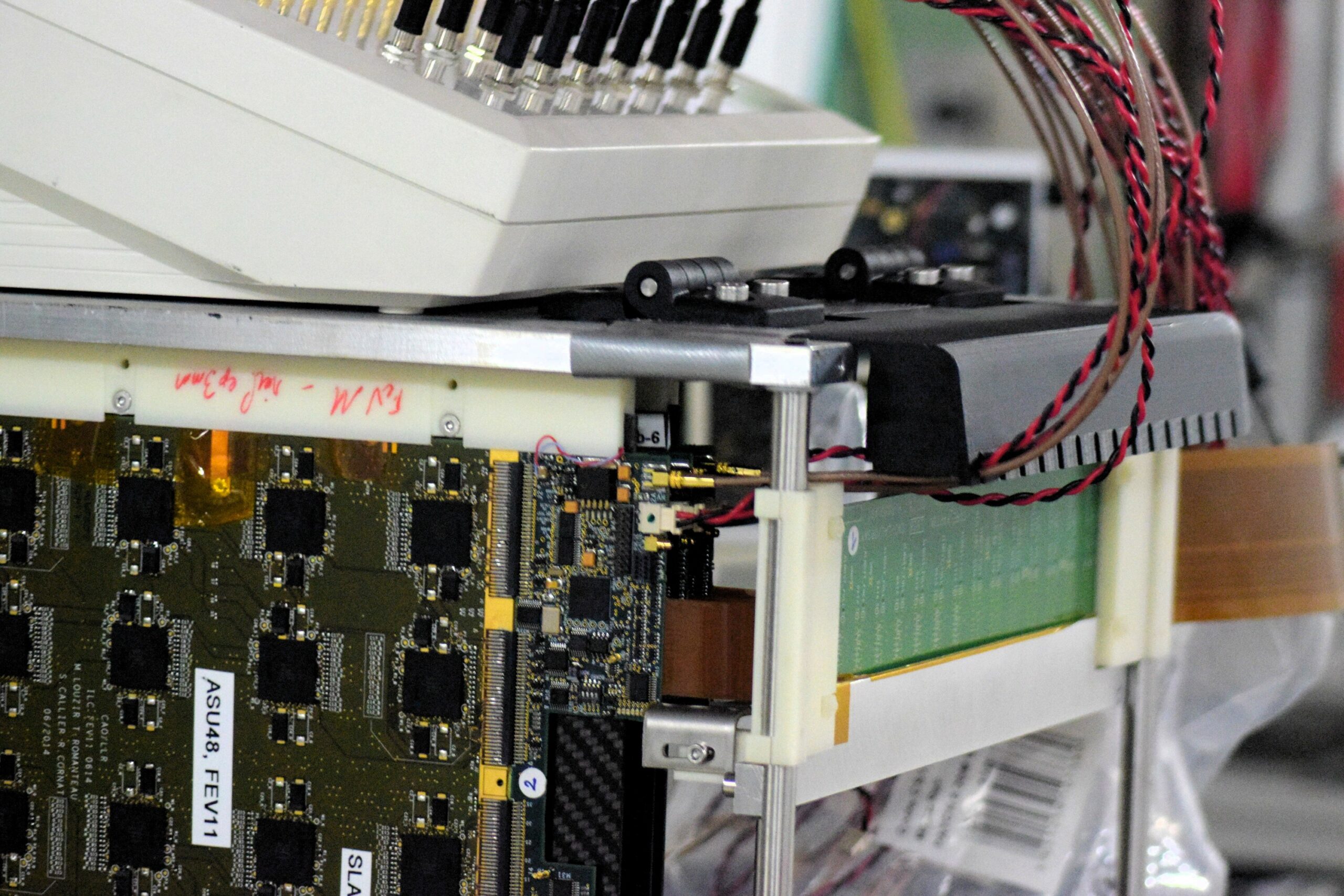
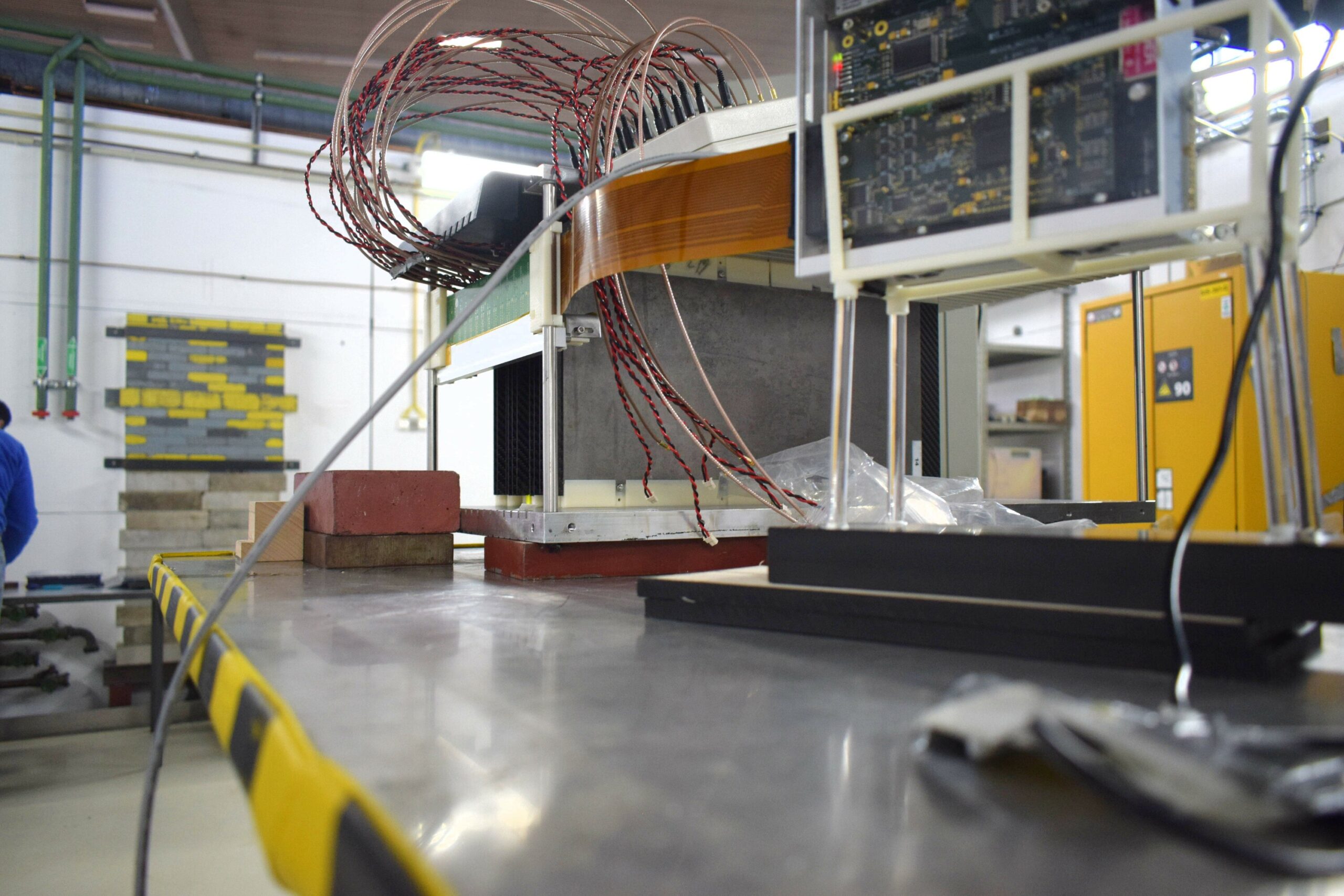
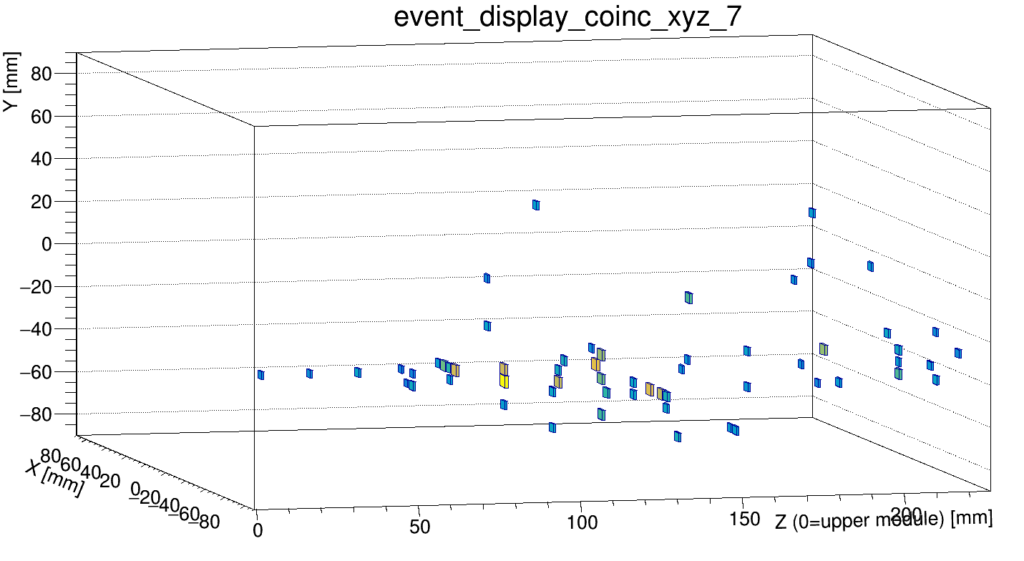
Author: A. Irles
«The photographs and the measurements leading to these results have been performed at the Test Beam Facility at DESY Hamburg (Germany), a member of the Helmholtz Association (HGF)».
For a more comprehensive view of the latest developments and achievements of the project, please check the following references (a sample with the latests):
Beam test performance of the highly granular SiW-ECAL technological prototype for the ILC
Adrian Irles (Orsay, LAL) corresp. author, K. Kawagoe (Kyushu U.), Y. Miura (Kyushu U.), I. Sekiya (Kyushu U.), T. Suehara (Kyushu U.), T. Yoshioka (Kyushu U.) et al. Published in: Nucl.Instrum.Meth.A 950 (2020), 162969
Performance study of SKIROC2/A ASIC for ILD Si-W ECAL T. Suehara (Kyushu U., Fukuoka (main)), I. Sekiya (Kyushu U., Fukuoka (main)), S. Callier (Ecole Polytechnique), V. Balagura (Ecole Polytechnique), V. Boudry (Ecole Polytechnique) et al. Published in: JINST 13 (2018) 03, C03015
Latest R&D news and beam test performance of the highly granular SiW-ECAL technological prototype for the ILC
CALICE Collaboration Adrián Irles (Orsay, LAL) for the collaboration. Published in: JINST 13 (2018) 02,C02038
CALICE SiW ECAL – Development and performance of a highly compact digital readout system CALICE Collaboration D. Breton (IJCLab, Orsay) et al. Published in: JINST 15 (2020) 05, C05074
CALICE SiW ECAL – Development and test of the chip-on-board PCB solution CALICE Collaboration Adrian Irles (IJCLab, Orsay) for the collaboration. Published in: JINST 15 (2020) 05, C05001
Testing Highly Integrated Components for the Technological Prototype of the CALICE SiW-ECAL CALICE Collaboration Adrian Irles (Orsay, LAL) for the collaboration. Contribution to:NSS/MIC 2019, 1-6




Un comentario